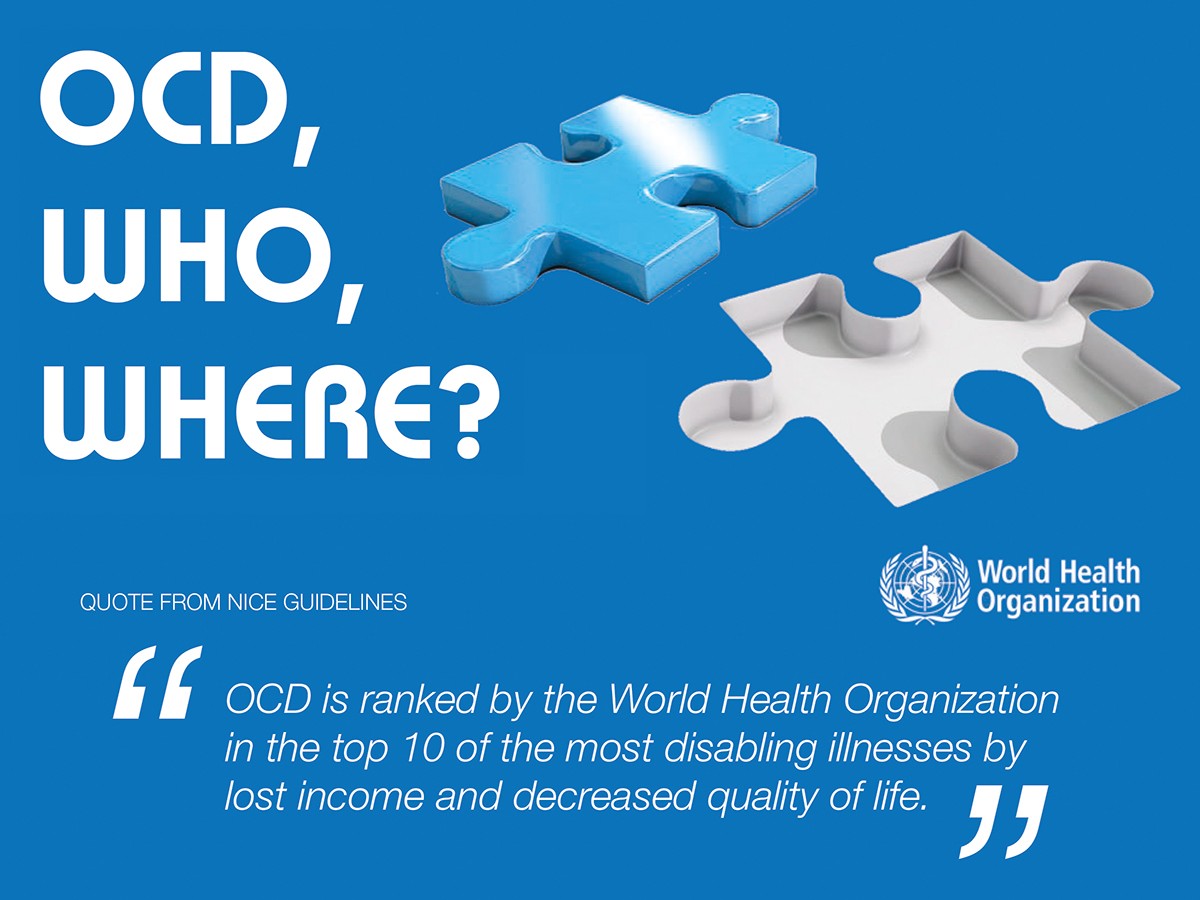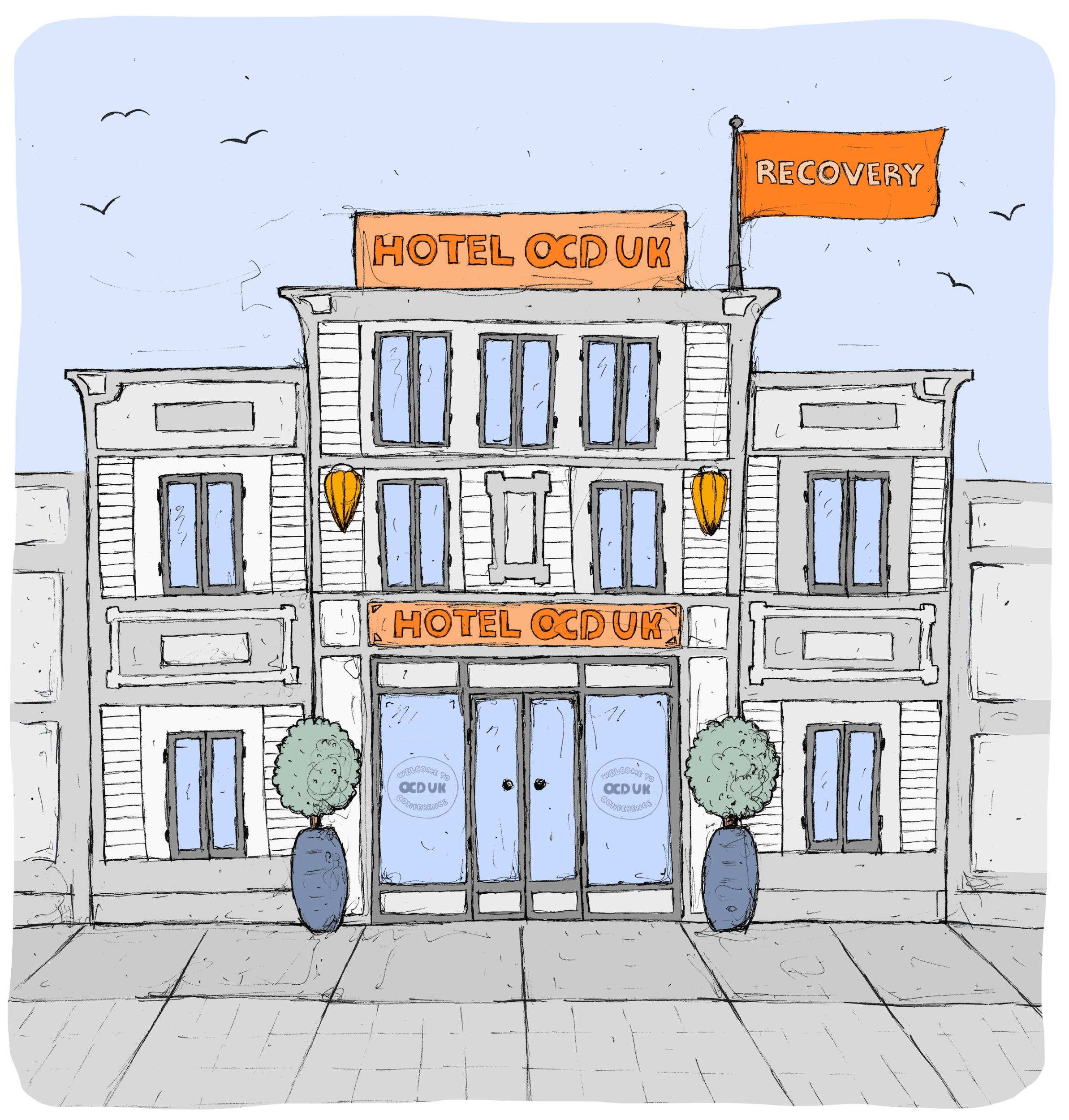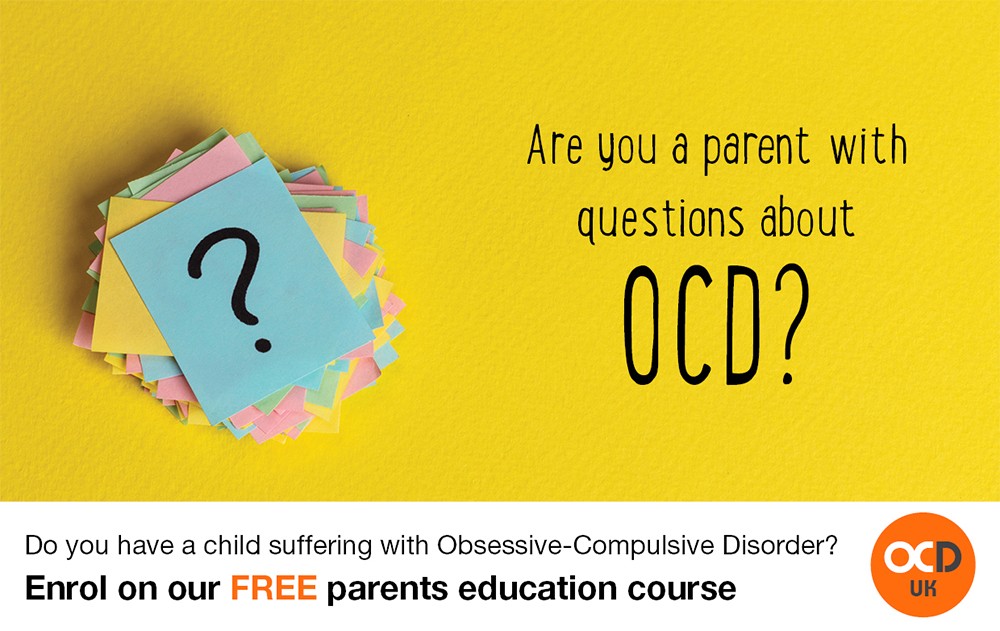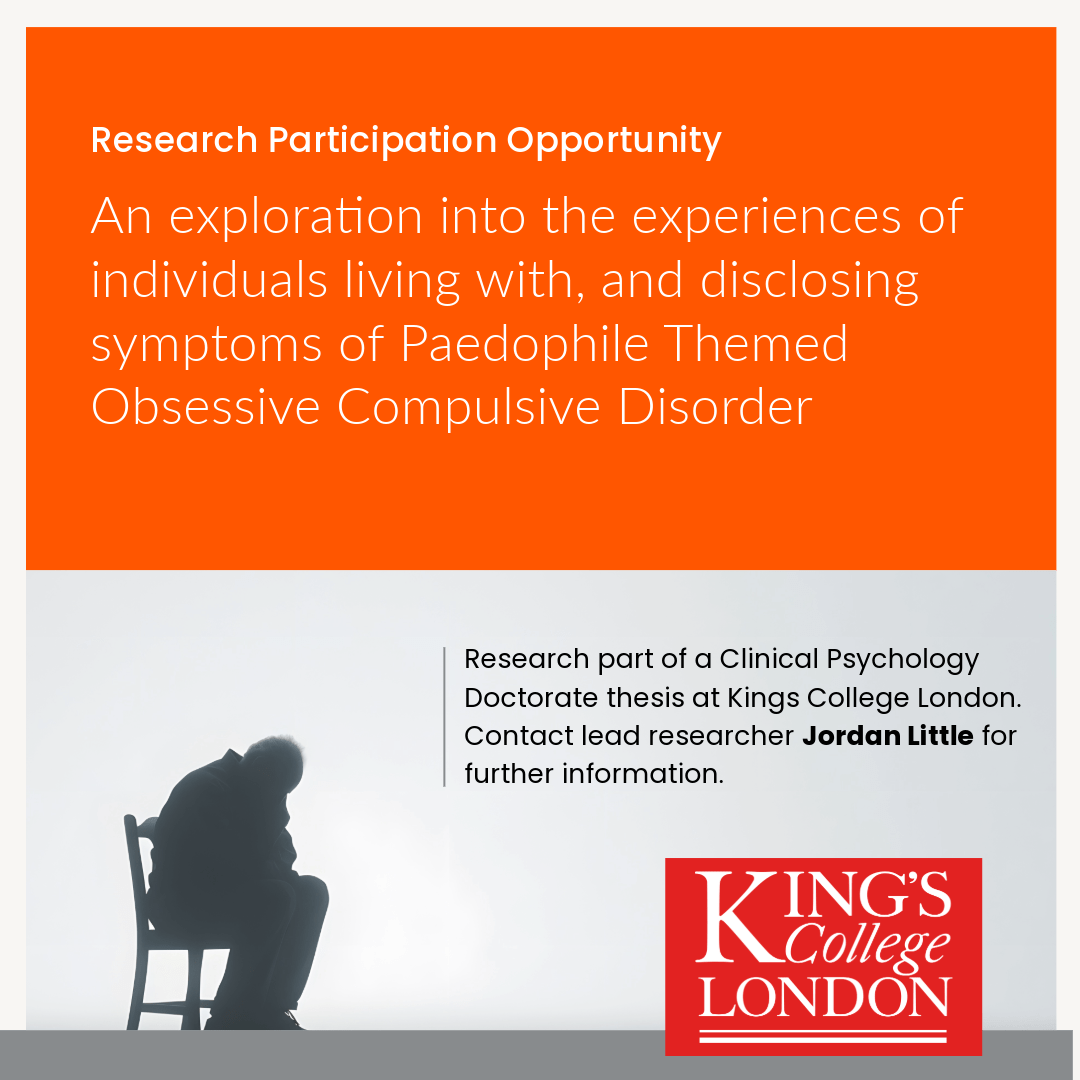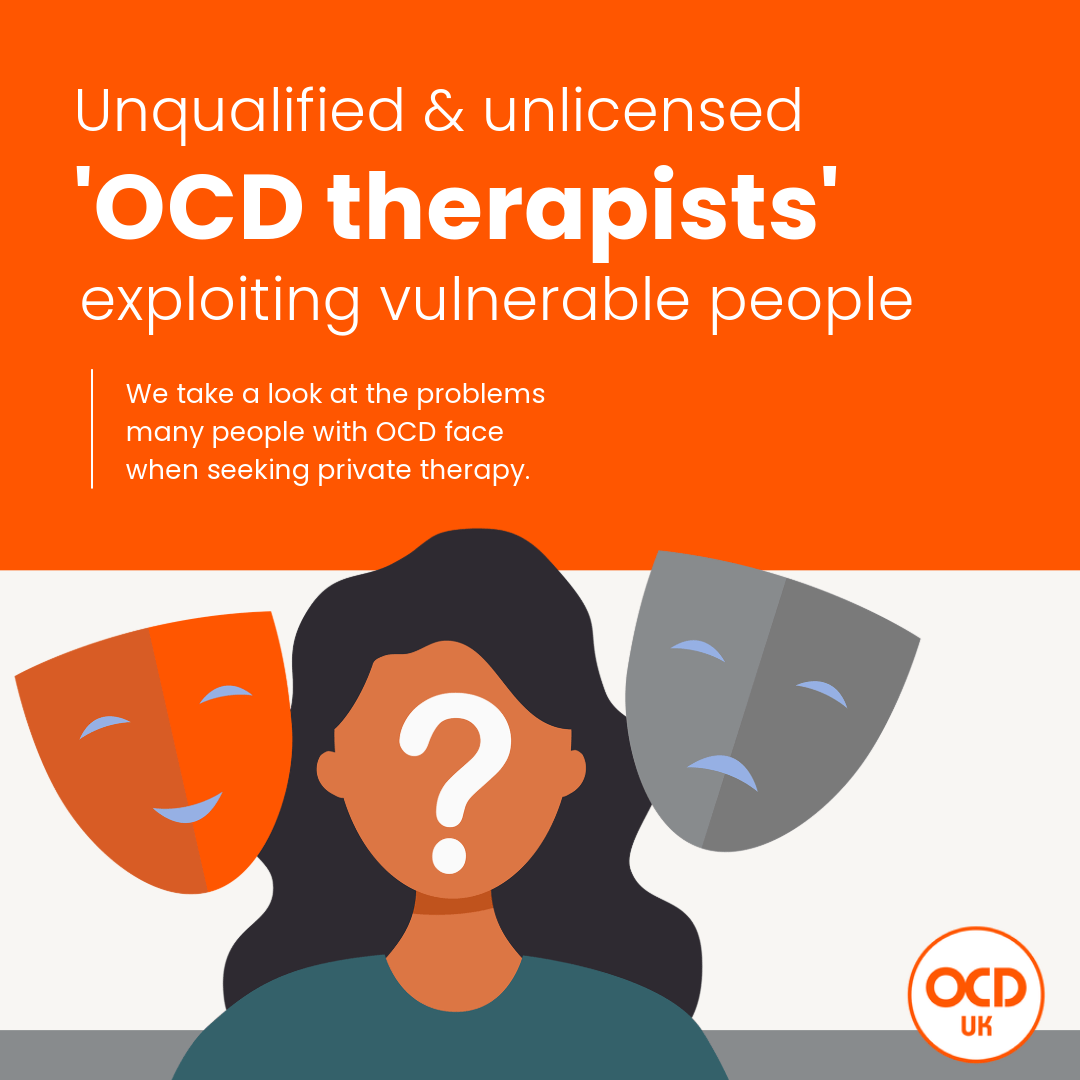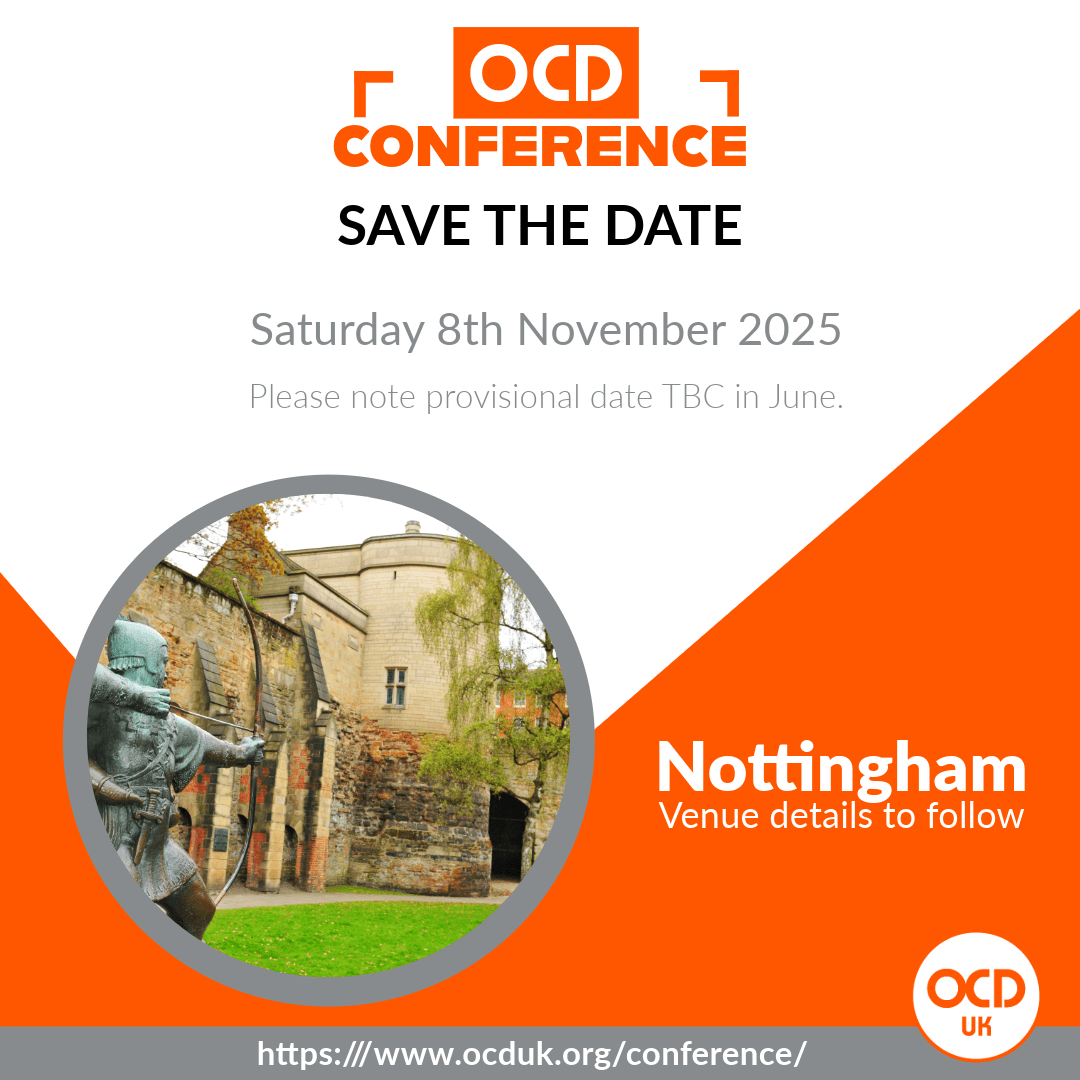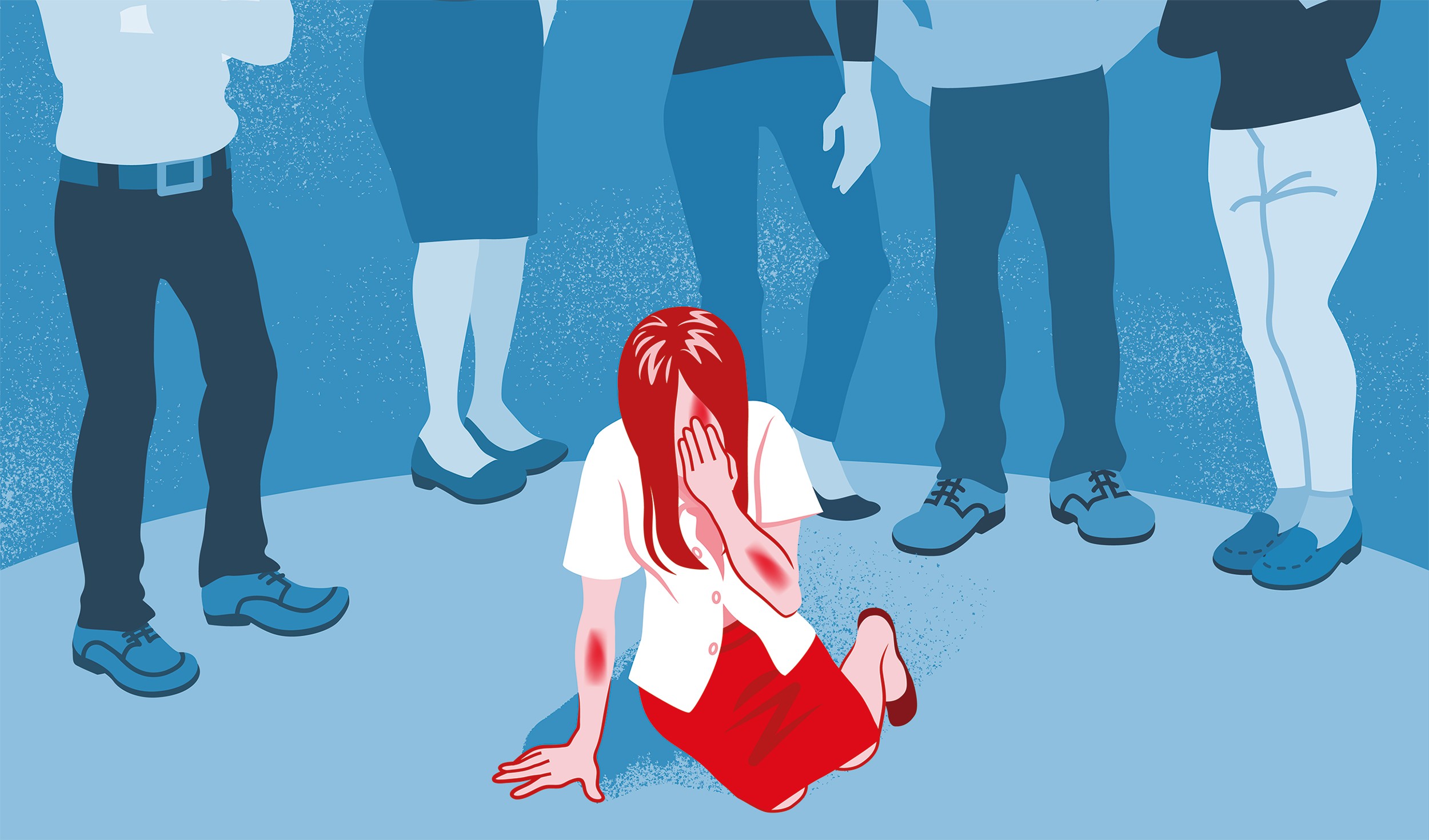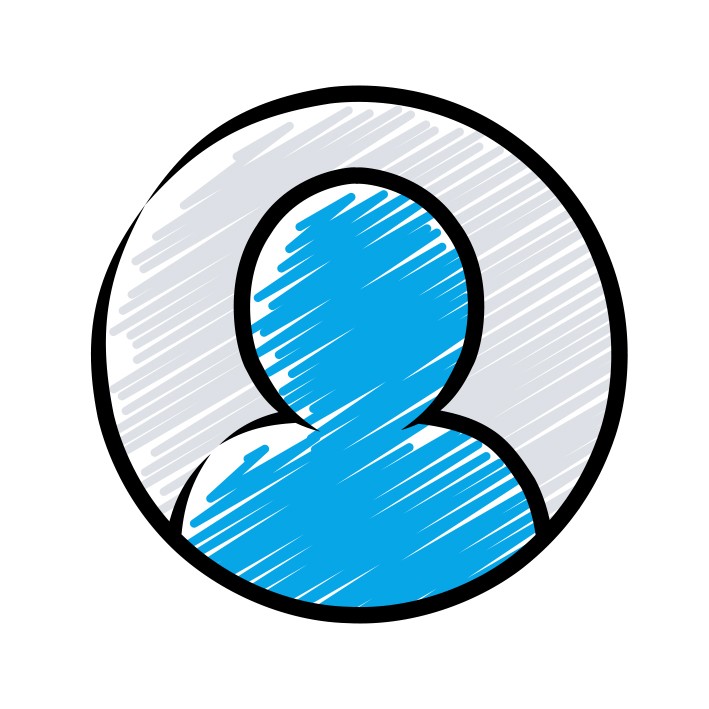Section Contents
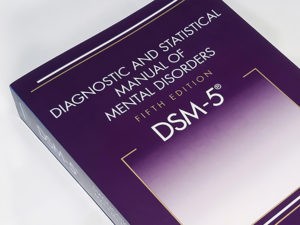 The Diagnostic and Statistical Manual of Mental Disorders (DSM) is published by the American Psychiatric Association and provides clinicians with official definitions of, and criteria for, diagnosing mental disorders.
The Diagnostic and Statistical Manual of Mental Disorders (DSM) is published by the American Psychiatric Association and provides clinicians with official definitions of, and criteria for, diagnosing mental disorders.
There have been six revisions since it was first published in 1952, the last major revision was ‘DSM-5’, published in May 2013, superseding DSM-IV, which was published in 1994 and revised in 2000.
Significantly, in DSM-5 there was a significant and controversial change to where OCD was listed. The previous edition of the DSM (DSM-IV) categorised Obsessive-Compulsive-Disorder (OCD) under ‘Anxiety Disorders’. However, some experts controversially suggested that the revised edition of the DSM remove OCD from this category and group it with loosely related conditions under the heading of ‘Obsessive-Compulsive and Related Disorders‘, which is what they did indeed do for DSM-5.
In 2010, prior to the publishing of DSM-5, a paper entitled ‘Should OCD be classified as an Anxiety disorder in DSM-V?’, surveyed authors of OCD publications internationally. Approximately 60% of the 187 respondents supported moving OCD out of the anxiety disorders section, whereas 40% disagreed. There was a significant difference in opinion between psychiatrists (75% supported a move) and other professionals (40–45% supported a move). The most frequent reason for supporting a move out of the anxiety disorders section was that obsessions and compulsions, rather than anxiety are the fundamental features of the disorder. The main reasons for disagreeing with such a move were that OCD and other anxiety disorders respond to similar treatments and tend to co-occur.
For this reason, the question of where OCD should be located in the diagnostic system has been met with some controversy and received attention and generated debate.
The problem with the change in this categorisation, is that it affects perceptions of what is considered OCD because it suggests that the conditions listed within this category are the same as OCD. For example since the DSM change in 2013, OCD-UK have received emails from people believing skin picking and OCD are the same, whilst there are similarities, there are also some significant differences between the two. That’s not to say skin picking is wrongly grouped within the OCD related disorders category, it’s just important to highlight the differences between the two.
On this page we will try and summarise what the DSM manual says about OCD and under which category they list it.
In DSM-5, Obsessive-Compulsive Disorder sits under its own category of Obsessive-Compulsive and Related Disorders and within that the following subcategories were placed:
- Obsessive Compulsive Disorder (OCD)
- Body Dysmorphic Disorder (BDD)
- Hoarding Disorder
- Trichotillomania
- Excoriation (Skin Picking) Disorder
- Substance/Medication-induced Obsessive-Compulsive and related Disorder
- Obsessive-Compulsive and Related Disorder due to another medical condition
- Other specified Obsessive-Compulsive and Related Disorder
- Unspecified Obsessive-Compulsive and Related Disorder
In the preceding chapter about Obsessive-Compulsive and Related Disorders the DSM-5 makes the following comments before its formal clinical classification:
OCD is characterized by the presence of obsessions and/or compulsions. Obsessions are recurrent and persistent thoughts, urges, or images that are experienced as intrusive and unwanted, whereas compulsions are repetitive behaviors or mental acts that an individual feels driven to perform in response to an obsession or according to rules that must be applied rigidly. Some other obsessive-compulsive and related disorders are also characterized by preoccupations and by repetitive behaviors or mental acts in response to the preoccupations. Other obsessive-compulsive and related disorders are characterized primarily by recurrent body-focused repetitive behaviors (e.g., hair pulling, skin picking) and repeated attempts to decrease or stop the behaviors.
The inclusion of a chapter on obsessive-compulsive and related disorders in DSM-5 reflects the increasing evidence of these disorders’ relatedness to one another in terms of a range of diagnostic validators as well as the clinical utility of grouping these disorders in the same chapter.
While the specific content of obsessions and compulsions varies among individuals, certain symptom dimensions are common in OCD, including those of cleaning (contamination obsessions and cleaning compulsions); symmetry (symmetry obsessions and repeating. ordering and counting compulsions); forbidden or taboo thoughts (e.g., aggressive, sexual and religious obsessions and related compulsions); and harm (e.g., fears of harm to oneself or others and related checking compulsions). The tic-related specifier of OCD is used when an individual has a current or past history of a tic disorder.
Obsessive-compulsive and related disorders that have a cognitive component have insight as the basis for specifiers; in each of these disorders, insight ranges from “good or fair insight” to “poor insight” to “absent insight/delusional beliefs” with respect to disorder-related beliefs. For individuals whose obsessive-compulsive and related disorder symptoms warrant the “with absent insight/delusional beliefs” specifier, these symptoms should not be diagnosed as a psychotic disorder.
In terms of the actual diagnostic criteria the DSM-5 lists the following:
Diagnostic Criteria
300 3 (F42)
A. Presence of obsessions, compulsions, or both:
Obsessions are defined by (1) and (2):
- Recurrent and persistent thoughts, urges, or images that are experienced, at some time during the disturbance, as intrusive and unwanted, and that in most individuals cause marked anxiety or distress.
- The individual attempts to ignore or suppress such thoughts, urges, or images, or to neutralize hem with some other thought or action (i.e., by performing a compulsion).
Compulsions are defined by (1) and (2):
- Repetitive behaviors (e.g., hand washing, ordering, checking) or mental acts (e.g., praying, counting, repeating words silently) that the individual feels driven to perform in response to an obsession or according to rules that must be applied rigidly.
- The behaviors or mental acts are aimed at preventing or reducing anxiety or distress, or preventing some dreaded event or situation; however, these behaviors or mental acts are not connected in a realistic way with what they are designed to neutralize or prevent, or are clearly excessive.
Note: Young children may not be able to articulate the aims of these behaviors or mental acts.
B. The obsessions or compulsions are time-consuming (e.g., take more than 1 hour per day) or cause clinically significant distress or impairment in social, occupational, or other important areas of functioning.
C. The obsessive-compulsive symptoms are not attributable to the physiological effects of a substance (e.g., a drug of abuse, a medication) or another medical condition.
D. The disturbance is not better explained by the symptoms of another mental disorder (e.g., excessive worries, as in generalized anxiety disorder; preoccupation with appearance, as in body dysmorphic disorder; difficulty discarding or parting with possessions, as in hoarding disorder; hair pulling, as in trichotillomania [hair-pulling disorder]; skin picking, as in excoriation [skin-picking] disorder; stereotypies, as in stereotypic movement disorder; ritualized eating behavior, as in eating disorders; preoccupation with substances or gambling, as in substance-related and addictive disorders; preoccupation with having an illness, as in illness anxiety disorder; sexual urges or fantasies, as in paraphilic disorders; impulses, as in disruptive, impulse-control, and conduct disorders; guilty ruminations, as in major depressive disorder; thought insertion or delusional preoccupations, as in schizophrenia spectrum and other psychotic disorders; or repetitive patterns of behavior, as in autism spectrum disorder).
Specify if:
With good or fair insight: The individual recognizes that obsessive-compulsive disorder beliefs are definitely or probably not true or that they may or may not be true.
With poor insight: The individual thinks obsessive-compulsive disorder beliefs are probably true.
With absent insight/delusional beliefs: The individual is completely convinced that obsessive-compulsive disorder beliefs are true.
Specify if:
Tic-related: The individual has a current or past history of a tic disorder.
Specifiers
Many individuals with obsessive-compulsive disorder (OCD) have dysfunctional beliefs. These beliefs can include an inflated sense of responsibility and the tendency to overestimate threat; perfectionism and intolerance of uncertainty; and over-importance of thoughts (e.g., believing that having a forbidden thought is as bad as acting on it) and the need to control thoughts.
Individuals with OCD vary in the degree of insight they have about the accuracy of the beliefs that underlie their obsessive-compulsive symptoms. Many individuals have good or fair insight (e.g., the individual believes that the house definitely will not, probably will not, or may or may not burn down if the stove is not checked 30 times). Some have poor insight (e.g., the individual believes that the house will probably burn down if the stove is not checked 30 times), and a few (4% or less) have absent insight/delusional beliefs (e.g., the individual is convinced that the house will burn down if the stove is not checked 30 times). Insight can vary within an individual over the course of the illness. Poorer insight has been linked to worse long-term outcome.
Up to 30% of individuals with OCD have a lifetime tic disorder. This is most common in males with onset of OCD in childhood. These individuals tend to differ from those without a history of tic disorders in the themes of their OCD symptoms, comorbidity, course, and pattern of familial transmission.
Diagnostic Features
The characteristic symptoms of OCD are the presence of obsessions and compulsions (Criterion A). Obsessions are repetitive and persistent thoughts (e.g., of contamination), images (e.g., of violent or horrific scenes), or urges (e.g., to stab someone). Importantly, obsessions are not pleasurable or experienced as voluntary: they are intrusive and unwanted and cause marked distress or anxiety in most individuals. The individual attempts to ignore or suppress these obsessions (e.g., avoiding triggers or using thought suppression) or to neutralize them with another thought or action (e.g., performing a compulsion). Compulsions (or rituals) are repetitive behaviors (e.g., washing, checking) or mental acts (e.g., counting, repeating words silently) that the individual feels driven to perform in response to an obsession or according to rules that must be applied rigidly. Most individuals with OCD have both obsessions and compulsions. Compulsions are typically performed in response to an obsession (e.g., thoughts of contamination leading to washing rituals or that something is incorrect leading to repeating rituals until it feels “just right”). The aim is to reduce the distress triggered by obsessions or to prevent a feared event (e.g., becoming ill). However, these compulsions either are not connected in a realistic way to the feared event (e.g., arranging items symmetrically to prevent harm to a loved one) or are clearly excessive (e.g., showering for hours each day). Compulsions are not done for pleasure, although some individuals experience relief from anxiety or distress.
Criterion B emphasizes that obsessions and compulsions must be time-consuming (e.g., more than 1 hour per day) or cause clinically significant distress or impairment to warrant a diagnosis of OCD. This criterion helps to distinguish the disorder from the occasional intrusive thoughts or repetitive behaviors that are common in the general population (e.g., double-checking that a door is locked). The frequency and severity of obsessions and compulsions vary across individuals with OCD (e.g., some have mild to moderate symptoms, spending 1—3 hours per day obsessing or doing compulsions, whereas others have nearly constant intrusive thoughts or compulsions that can be incapacitating).
Associated Features Supporting Diagnosis
The specific content of obsessions and compulsions varies between individuals. However, certain themes, or dimensions, are common, including those of cleaning (contamination obsessions and cleaning compulsions); symmetry (symmetry obsessions and repeating, ordering, and counting compulsions); forbidden or taboo thoughts (e.g., aggressive, sexual, or religious obsessions and related compulsions); and harm (e.g., fears of harm to oneself or others and checking compulsions). Some individuals also have difficulties discarding and accumulate (hoard) objects as a consequence of typical obsessions and compulsions, such as fears of harming others. These themes occur across different cultures, are relatively consistent over time in adults with the disorder, and may be associated with different neural substrates. Importantly, individuals often have symptoms in more than one dimension.
Individuals with OCD experience a range of affective responses when confronted with situations that trigger obsessions and compulsions. For example, many individuals experience marked anxiety that can include recurrent panic attacks. Others report strong feelings of disgust. While performing compulsions, some individuals report a distressing sense of “incompleteness” or uneasiness until things look, feel, or sound “just right.”
It is common for individuals with the disorder to avoid people, places, and things that trigger obsessions and compulsions. For example, individuals with contamination concerns might avoid public situations (e.g., restaurants, public restrooms) to reduce exposure to feared contaminants; individuals with intrusive thoughts about causing harm might avoid social interactions.
Prevalence
The 12-month prevalence of OCD in the United States is 1.2%, with a similar prevalence internationally (1.1%—1.8%). Females are affected at a slightly higher rate than males in adulthood, although males are more commonly affected in childhood.
Development and Course
In the United States, the mean age at onset of OCD is 19.5 years, and 25% of cases start by age 14 years. Onset after age 35 years is unusual but does occur. Males have an earlier age at onset than females: nearly 25% of males have onset before age 10 years. The onset of symptoms is typically gradual; however, acute onset has also been reported.
If OCD is untreated, the course is usually chronic, often with waxing and waning symptoms. Some individuals have an episodic course, and a minority have a deteriorating course. Without treatment, remission rates in adults are low (e.g., 20% for those reevaluated 40 years later). Onset in childhood or adolescence can lead to a lifetime of OCD. However, 40% of individuals with onset of OCD in childhood or adolescence may experience remission by early adulthood. The course of OCD is often complicated by the co-occurrence of other disorders (see section “Comorbidity” for this disorder).
Compulsions are more easily diagnosed in children than obsessions are because compulsions are observable. However, most children have both obsessions and compulsions (as do most adults). The pattern of symptoms in adults can be stable over time, but it is more variable in children. Some differences in the content of obsessions and compulsions have been reported when children and adolescent samples have been compared with adult samples. These differences likely reflect content appropriate to different develop mental stages (e.g., higher rates of sexual and religious obsessions in adolescents than in children; higher rates of harm obsessions [e.g., fears of catastrophic events, such as death or illness to self or loved ones] in children and adolescents than in adults).
Risk and Prognostic Factors
Temperamental. Greater internalizing symptoms, higher negative emotionality, and behavioral inhibition in childhood are possible temperamental risk factors.
Environmental. Physical and sexual abuse in childhood and other stressful or traumatic events have been associated with an increased risk for developing OCD. Some children may develop the sudden onset of obsessive-compulsive symptoms, which has been associated with different environmental factors, including various infectious agents and a post-infectious autoimmune syndrome.
Genetic and physiological. The rate of OCO among first-degree relatives of adults with OCD is approximately two times that among first-degree relatives of those without the disorder; however, among first-degree relatives of individuals with onset of OCD in chilldhood or adolescence, the rate is increased I0-fold. Familial transmission is due in part to genetic factors (e.g., a concordance rate of 0.57 for monozygotic vs. 0.22 for dizygotic twins). Dysfunction in the orbitofrontal cortex, anterior cingulate cortex, and striatum have been most strongly implicated.
Culture-Related Diagnostic Issues
OCD occurs across the world. There is substantial similarity across cultures in the gender distribution, age at onset, and comorbidity of OCD. Moreover, around the globe, there is a similar symptom structure involving cleaning, symmetry, hoarding, taboo thoughts, or fear of harm. However, regional variation in symptom expression exists, and cultural factors may shape the content of obsessions and compulsions.
Gender-Related Diagnostic Issues
Males have an earlier age at onset of OCD than females and are more likely to have eomorbid tic disorders. Gender differences in the pattern of symptom dimensions have been reported, with, for example, females more likely to have symptoms in the cleaning dimension and males more likely to have symptoms in the forbidden thoughts and symmetry dimensions. Onset or exacerbation of OCD, as well as symptoms that can interfere with the mother-infant relationship (e.g., aggressive obsessions leading to avoidance of the infant), have been reported in the peripartum period.
Suicide Risk
Suicidal thoughts occur at some point in as many as about half of individuals with OCD. Suicide attempts are also reported in up to one-quarter of individuals with OCD; the presence of comorbid major depressive disorder increases the risk.
Functional Consequences of Obsessive-Compulsive Disorder
OCD is associated with reduced quality of life as well as high levels of social and occupational impairment. Impairment occurs across many different domains of life and is associated with symptom severity. Impairment can be caused by the time spent obsessing and doing compulsions. Avoidance of situations that can trigger obsessions or compulsions can also severely restrict functioning. In addition, specific symptoms can create specific obstacles. For example, obsessions about harm can make relationships with family and friends feel hazardous; the result can be avoidance of these relationships. Obsessions about symmetry can derail the timely completion of school or work projects because the project never feels “just right,” potentially resulting in school failure or job loss. Health consequences can also occur. For example, individuals with contamination concerns may avoid doctors’ offices and hospitals (e.g., because of fears of exposure to germs) or develop dermatological problems (e.g., skin lesions due to excessive washing). Sometimes the symptoms of the disorder interfere with its own treatment (e.g., when medications ate considered contaminated). When the disorder starts in childhood or adolescence, individuals may experience developmental difficulties. For example, adolescents may avoid socializing with peers; young adults may struggle when they leave home to live independently.
The result can be few significant relationships outside the family and a lack of autonomy and financial independence from their family of origin. In addition, some individuals with OCD try to impose rules and prohibitions on family members because of their disorder (e.g., no one in the family can have visitors to the house for fear of contamination), and this can lead to family dysfunction.
Comorbidity
Individuals with OCD often have other psychopathology. Many adults with the disorder have a lifetime diagnosis of an anxiety disorder (76%; e.g., panic disorder, social anxiety disorder, generalized anxiety disorder, specific phobia) or a depressive or bipolar disorder (63% for any depressive or bipolar disorder, with the most common being major depressive disorder [41%). Onset of OCD is usually later than for most comorbid anxiety disorders (with the exception of separation anxiety disorder) and PTSD but often precedes that of depressive disorders. Comorbid obsessive-compulsive personality disorder is also common in individuals with OCD (e.g., ranging from 23% to 32%).
Up to 30% of individuals with OCD also have a lifetime tic disorder. A comorbid tic disorder is most common in males with onset of OCD in childhood. These individuals tend to differ from those without a history of tic disorders in the themes of their OCD symptoms, comorbidity, course, and pattern of familial transmission. A triad of OCD, tic disorder, and attention-deficit/hyperactivity disorder can also be seen in children.
Disorders that occur more frequently in individuals with OCD than in those without the disorder include several obsessive-compulsive and related disorders such as body dysmorphic disorder, trichotillomania (hair-pulling disorder), and excoriation (skin-picking) disorder. Finally, an association between OCD and some disorders characterized by impulsivity, such as oppositional defiant disorder, has been reported.
OCD is also much more common in individuals with certain other disorders than would be expected based on its prevalence in the general population; when one of those other disorders is diagnosed, the individual should be assessed for OCD as well. For example, in individuals with schizophrenia or schizoaffective disorder, the prevalence of OCD is approximately 12%. Rates of OCD are also elevated in bipolar disorder; eating disorders, such as anorexia nervosa and bulimia nervosa; and Tourette’s disorder.
Section Contents
What to read next:


